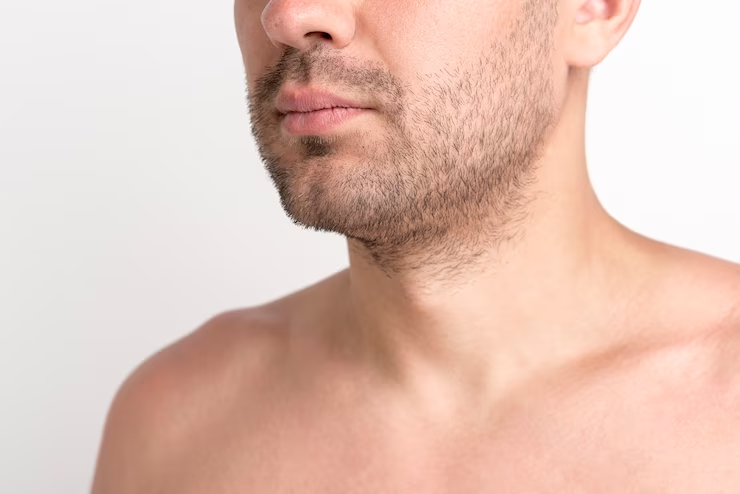
Cyst vs pimple: two common skin concerns that can leave us searching for answers. These two common dermatological issues can have a significant impact on our appearance, self-esteem, and overall well-being. It's crucial to understand the differences between pimples and cysts in order to properly address them and find effective treatments.
In this blog post, we'll delve into the world of cysts and pimples, exploring their definitions, causes, symptoms, and most importantly, the key distinctions between them. By gaining a deeper understanding of these two skin concerns, you'll be better equipped to navigate their treatment options and find the relief you seek.
What is a Cyst?
Cysts are sac-like structures that can develop beneath the skin or in other parts of the body. They are typically filled with fluid, semi-solid material, or a combination of both. These structures are formed when cells cluster together and create a closed pocket, resulting in the formation of a cyst.
There are various types of cysts that can occur in the skin.
Sebaceous cysts
Epidermoid cysts
[Pilonidal cyst](
https://www.mayoclinic.org/diseases-conditions/pilonidal-cyst/symptoms-causes/syc-20376329#:~:text=A%20pilonidal%20(pie%2Dlow%2D,skin%20and%20then%20becomes%20embedded
.)
, which forms near the tailbone and is often associated with hair follicle inflammation.Cysts can vary in size, ranging from small, barely noticeable ones to larger, more prominent ones. They can develop in different areas of the body, including the skin, organs, and tissues. However, for the purpose of this blog post, we will focus on cysts that occur within the skin.
Causes of cyst formation can vary depending on the type of cyst. Some common causes include:
blockages in the ducts of oil glands
infections
genetic factors
hormonal imbalances
presence of foreign substances within the body.
Cysts can also develop as a result of certain medical conditions or as a response to an injury or trauma.
Treatment Options for Cysts
Common signs of cyst include a noticeable lump or bump beneath the skin, redness, swelling, tenderness, and pain. In some cases, cysts may become infected, leading to additional symptoms such as warmth, pus drainage, and increased pain.
When it comes to the treatment of cysts, the approach may vary depending on the type of cyst, its size, location, and whether it is causing any symptoms or complications. Here are some common treatment options for cysts:
Observation and monitoring
In some cases, small and asymptomatic cysts may not require any immediate treatment. The healthcare provider may recommend a wait-and-watch approach, regularly monitoring the cyst for any changes in size, symptoms, or complications.
Home remedies
Certain home remedies can help in managing cysts, especially those that are not infected or causing significant discomfort. Applying warm compresses to the affected area can help promote blood circulation and facilitate the natural drainage of the cyst. However, it is important to note that home remedies may not be effective for all types of cysts.
Over-the-counter treatments
There are over-the-counter topical treatments available, such as creams or ointments containing ingredients like benzoyl peroxide or salicylic acid, which can help reduce inflammation and promote the healing of certain types of cysts, such as acne cysts. These treatments are generally more effective for superficial cysts, but do not apply it on your cysts unless a dermatologist prescribes you a medication because these ingredients can irritate the skin as well causing more damage.
Prescription medications
In cases where the cyst is causing persistent symptoms or is at risk of infection, a healthcare professional, preferably a dermatologist may prescribe medications may prescribe medications. Oral antibiotics may be prescribed if there is an infection present or to prevent infection from occurring. Additionally, corticosteroid injections directly into the cyst can help reduce inflammation and promote shrinking in certain types of cysts.
Drainage or excision
For larger or more bothersome cysts, drainage or excision may be necessary. This procedure involves puncturing the cyst with a sterile needle or making a small incision to drain the fluid or contents. In some cases, the cyst sac or wall may also be removed surgically to prevent recurrence. This procedure is typically performed by a dermatologist.
What is a Pimple?
A pimple, also known as acne or a zit, is a common skin condition characterized by localized inflammation of the skin. Pimples typically occur when hair follicles become clogged with excess oil (sebum), dead skin cells, and bacteria. This blockage leads to the formation of a raised lesion on the skin's surface.
Pimples can manifest in different forms, including whiteheads, blackheads, papules, pustules, nodules, and cysts. Each type of pimple has distinct characteristics and severity.
Whiteheads
: These are closed comedones that appear as small, flesh-colored or whitish bumps on the skin's surface. The clogged pore remains closed, trapping sebum and bacteria beneath the skin.Blackheads
: Blackheads, also known as open comedones, are similar to whiteheads but have a dark or black appearance. The clogged pore remains open, allowing the accumulated material to oxidize and turn black upon exposure to air.Papules
: Papules are small, raised red bumps on the skin that occur due to inflammation around the clogged pore. They can be tender to the touch but do not contain pus.Pustules
: Pustules are larger, inflamed bumps characterized by a white or yellowish center surrounded by red, inflamed skin. They contain pus and are often referred to as "pimples" in common parlance.Nodules
: Nodules are deeper, more severe acne lesions that develop beneath the skin's surface. They are typically larger, painful, and solid to the touch. Nodules result from a more significant inflammatory response and may take longer to heal.Treatment Options for Pimples
Pimples often occur on the face, neck, chest, back, and shoulders, where oil glands are more numerous. Hormonal changes, excess sebum production, bacterial activity, and clogged hair follicles contribute to the formation of pimples.
When it comes to the treatment of pimples, there are various options available depending on the severity of the acne and individual circumstances. Here are some common treatment options for pimples:
Over-the-counter topical treatments
Many mild to moderate pimples can be effectively managed with over-the-counter topical treatments. These treatments often contain ingredients such as benzoyl peroxide, salicylic acid, or sulfur, which help to unclog pores, reduce inflammation, and kill bacteria. They come in various forms, including gels, creams, lotions, and spot treatments. It's important to follow the instructions provided and gradually introduce these products to minimize skin irritation. Always use these products after consulting with a skin specialist because they can irritate the skin causing further damage.
Prescription topical medications
In cases where over-the-counter treatments are not sufficient, a dermatologist may prescribe stronger topical medications. These may include topical antibiotics (e.g., clindamycin, erythromycin) or topical retinoids (e.g., tretinoin, adapalene), which work to reduce inflammation, unclog pores, and promote skin cell turnover.
It should be kept in mind these medications should be applied as per instructions because applying voraciously might cause really bad irritation (especially isotretinoin is an irritant)
Oral medications
For more severe or persistent acne, oral medications may be prescribed. Antibiotics, such as doxycycline or minocycline, may be used to reduce bacteria and inflammation. Oral contraceptives (for females) can help regulate hormones and manage acne in certain cases. In more severe and resistant cases, isotretinoin (Accutane) may be prescribed, but it requires careful monitoring due to potential side effects.
In-office procedures
In certain situations, dermatologists may recommend in-office procedures to treat pimples. These can include extraction of comedones (blackheads and whiteheads with a blackhead extractor), corticosteroid injections to reduce inflammation and promote healing of large or persistent pimples. Procedures such as chemical peels or laser therapy are also recommended to improve overall skin condition and reduce acne.
Skincare routine and lifestyle changes
Alongside medical treatments, establishing a consistent and gentle skincare routine is essential. This may involve using a mild cleanser to remove excess oil and dirt, avoiding harsh scrubbing or picking at pimples, and using non-comedogenic (non-pore-clogging) moisturizers and cosmetics. Additionally, maintaining a healthy lifestyle, including a balanced diet, regular exercise, stress management, and adequate sleep, can contribute to overall skin health.
Cyst Vs Pimple: What Are Their Key Differences?

Image Source: Acne.org By examining the contrasting features of a cyst vs pimple, we can gain a deeper understanding of these common skin issues and how they manifest.
Formation and Size
Cysts:
Cysts are typically formed deeper beneath the skin and are larger compared to pimples. They involve the formation of sac-like structures filled with fluid or semisolid material.Pimples
: Pimples, on the other hand, are localized inflammations that occur closer to the skin's surface. They are usually smaller in size than cysts.Appearance and Characteristics
Cysts:
Cysts appear as raised bumps beneath the skin. They can be firm or soft to the touch, and their size may vary. Cysts often cause pain, redness, swelling, and tenderness.Pimples:
Pimples can have different appearances depending on the type. They can manifest as whiteheads (closed comedones), blackheads (open comedones), papules, pustules, nodules, or cysts. Pimples are typically smaller and may have a white or black center.Depth and Location
Cysts: Cysts are deeper-seated and can occur within the skin or other tissues and organs of the body. Pimples: Pimples are more superficial and are commonly found on the face, neck, chest, back, and shoulders—areas with a higher density of oil glands.
Causes and Triggers
Cysts:
Cysts can develop due to various factors such as hormonal imbalances, genetic predisposition, infections, or blockages in glandular ducts.Pimples:
Pimples are often caused by factors such as hormonal changes (particularly during puberty), excess oil (sebum) production, bacterial activity, and clogged hair follicles.Treatment Approaches
Cysts:
Treating cysts usually requires medical intervention. Options may include prescription medications like oral antibiotics or corticosteroid injections. Drainage or excision procedures may also be performed by healthcare professionals. Therefore always consult your specialist doctor before planning to start anything.Pimples
: Pimples can often be managed with over-the-counter topical treatments containing ingredients like benzoyl peroxide or salicylic acid. Establishing a consistent skincare routine, gentle cleansing, and avoiding picking or squeezing pimples are also important.Cyst Vs Pimple: What Are The Similarities?
While pimples & cysts have distinct differences, there are also some similarities between the two. Here are a few commonalities:
Both involve the skin
: Cysts and pimples are both skin conditions that affect the appearance and health of the skin.Result from blocked follicles
: Both cysts and pimples are often the result of clogged hair follicles. In both cases, the blockage can occur due to excess oil (sebum), dead skin cells, and sometimes bacterial buildup.__ Inflammatory response__: Both pimples & cysts can cause inflammation in the affected area. This inflammation leads to redness, swelling, and tenderness.
Can be painful
: Depending on their size and location, both cysts and pimples can be painful or tender to the touch.Risk of scarring
: If not properly managed or treated, both pimples & cysts can potentially result in scarring. Picking, squeezing, or improper handling of these skin conditions can increase the risk of scarring.Occur in similar areas
: Both cysts and pimples can occur in similar areas of the body, particularly in regions with a higher concentration of oil glands, such as the face, neck, chest, back, and shoulders.While these similarities exist, it's important to note that pimples & cysts are distinct in terms of their formation, appearance, size, and treatment approaches. Proper diagnosis by a healthcare professional or dermatologist is essential to differentiate between the two and determine the appropriate course of treatment.
Conclusion
Understanding the differences between cysts and pimples is crucial for accurately identifying and effectively managing these common skin conditions. While pimples & cysts have distinct characteristics, they also share similarities. However, the key distinctions lie in their formation, appearance, size, and treatment approaches.
Seeking professional guidance is invaluable in navigating the complexities of cyst vs pimple and maintaining a healthy complexion. Stay informed, take care of your skin, and remember to consult with a healthcare professional or dermatologist for personalized advice on managing cysts and pimples effectively.







